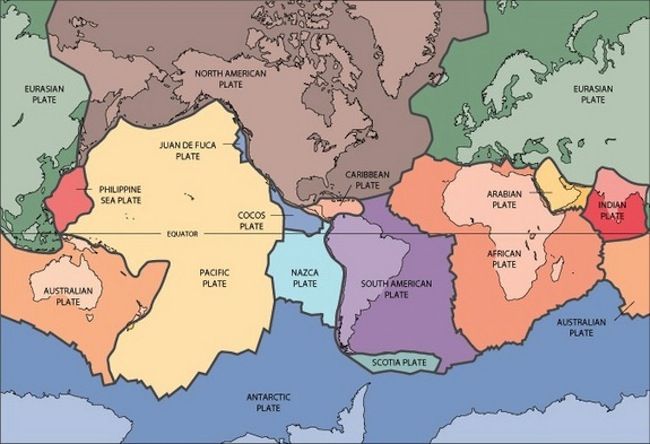Buried 'Soda Fizz' May Solve Mystery of Coasting Tectonic Plates

The carbon dioxide that makes soft drinks fizz could help solve the mystery of why rocks melt the way they do beneath the seafloor, researchers say.
These findings could help explain the motion of the giant tectonic plates that surf over Earth's mantle (the rocky inner layer above the core). By understanding these movements, scientists can get a better picture of how the continents have drifted over time, as well as gain more insight into disasters such as earthquakes and volcanic eruptions.
Scientists think a layer of relatively soft, weak rock in Earth's upper mantle layer sits right underneath the planet's crust, or outer layer. This layer would help lubricate the motion of tectonic plates and explain how they can move as freely as researchers have observed. [In Images: How North America Grew as a Continent]
A popular candidate for the source of this lubrication is a very small degree of melting of the upper mantle. Such melting would also explain the high electrical conductivity seen in the rock below the plates, as well as the low speed or velocities of seismic waves rippling through them.
However, this idea has run into trouble, because computer models had suggested a relatively large amount of molten rock was needed to explain the electrical properties and seismic velocities seen under the oceanic tectonic plates. Such large amounts of molten rock could escape from the surrounding rock, which is not what investigators have seen.
To help solve this mystery, researchers analyzed in the lab what happened if the kind of silicate rock found in the mantle was rich in both water and carbon dioxide, the basic ingredients of soda water. Surface rock that is rich in water and carbon dioxide gets driven into the mantle at the borders of tectonic plates.In lab experiments, the investigators subjected this "juice, a molten mixture of carbon dioxide, water and silicate," to the kinds of high pressures and high temperatures found in the mantle, said study author Fabrice Gaillard, a geoscientist at the University of Orleans in France.
The scientists found this melted rock was highly electrically conductive. Their computer models suggest that very small amounts of such molten rock — making up less than 0.5 percent of the mantle's volume — could explain both the electrical properties and seismic velocities seen under oceanic plates.
Sign up for the Live Science daily newsletter now
Get the world’s most fascinating discoveries delivered straight to your inbox.
"Such a small amount of melt could have a major impact on large-scale processes — a bit like David winning against Goliath," Gaillard told Live Science.
The scientists detail their findings in the May 1 issue of the journal Nature.
Follow Live Science @livescience, Facebook & Google+. Original article on Live Science.












